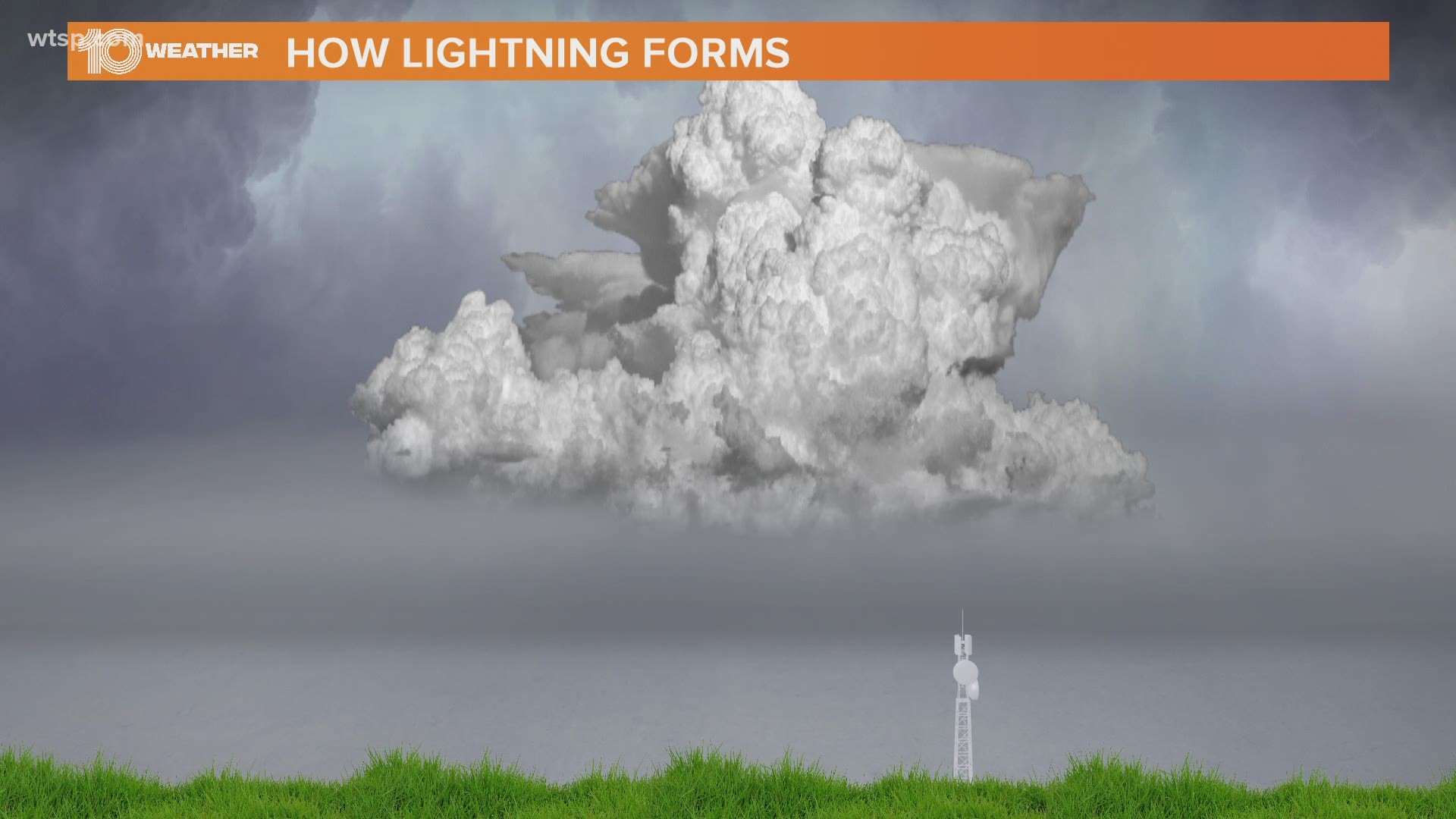ST. PETERSBURG, Fla. — There's no other place in the United States that receives more lightning strikes than the state of Florida, and the Tampa Bay region is ground zero.
It's Lightning Safety Awareness Week, so to get you prepared, here are 10 common myths about lightning.
1. Myth: Lightning never strikes the same place twice.
Fact: According to NOAA, lightning often strikes the same place repeatedly, especially if it's a tall object. The Empire State Building is hit an average of 23 times a year.
2. Myth: If you're outside in a thunderstorm, you should seek shelter under a tree.
Fact: A tree is one of the worst places to be, it's a natural conductor. NOAA says being underneath a tree is the second leading cause of lightning casualties.
3. Myth: If you're outside, you should Iay flat on the ground to avoid being struck.
Fact: NOAA also says this isn't a good idea. Lying flat increases your chance of being affected by deadly ground current.
4. Myth: If you touch someone who has been struck by lightning you can be electrocuted.
Fact: According to NOAA, the human body does not store electricity. If you are able to, you should give a lightning victim first aid and call 911.
5. Myth: Lightning cannot strike in an area if it is not raining.
Fact: Not true. According to NOAA, even if the sky is blue lighting can still strike. If thunder roars, seek shelter immediately.
6. Myth: You are 100% safe from lightning in a house.
Fact: A house is a safe place to be during a thunderstorm but you need to avoid anything that conducts electricity. Windows are also dangerous because wind generated during a thunderstorm can blow objects into the window and in rare instances, lightning can come in cracks in the sides of windows.
7. Myth: Being in a car protects you from lightning.
Fact: Most cars are safe from lightning, but it is the metal roof and metal sides can still be dangerous. When lightning strikes a vehicle, it goes through the metal frame into the ground.
8. Myth: Lightning flashes are 3-4 km apart.
Fact: According to NOAA old data said successive flashes were 3-4 km apart. New data shows half the flashes are about 9 km apart.
9. Myth: A lot of lightning flashes are forked.
Fact: Many lightning flashes have forked points. Tests carried out in the US and Japan found this to be true in at least half of negative flashes and more than 70% of positive flashes. Source: NOAA
10. Myth: Lightning can spread out 60 feet after striking the earth.
Fact: NOAA says radial horizontal arcing has been measured at least 20 m. from the point where lightning hits the ground.
- Ronnie Oneal III found guilty of murdering girlfriend, daughter in Riverview
- Officials say Florida deadly Pride parade crash was not intentional
- FHP: 2 motorcyclists shot by passing car on Howard Frankland
- St. Petersburg bartender rescues two women from harasser with fake 'receipt'
- This week’s end to $300 federal unemployment benefit sparks mixed reaction
- A Frank Conversation: New podcast explores race, religion, politics and more
►Breaking news and weather alerts: Get the free 10 Tampa Bay app
►Stay In the Know! Sign up now for the Brightside Blend Newsletter

